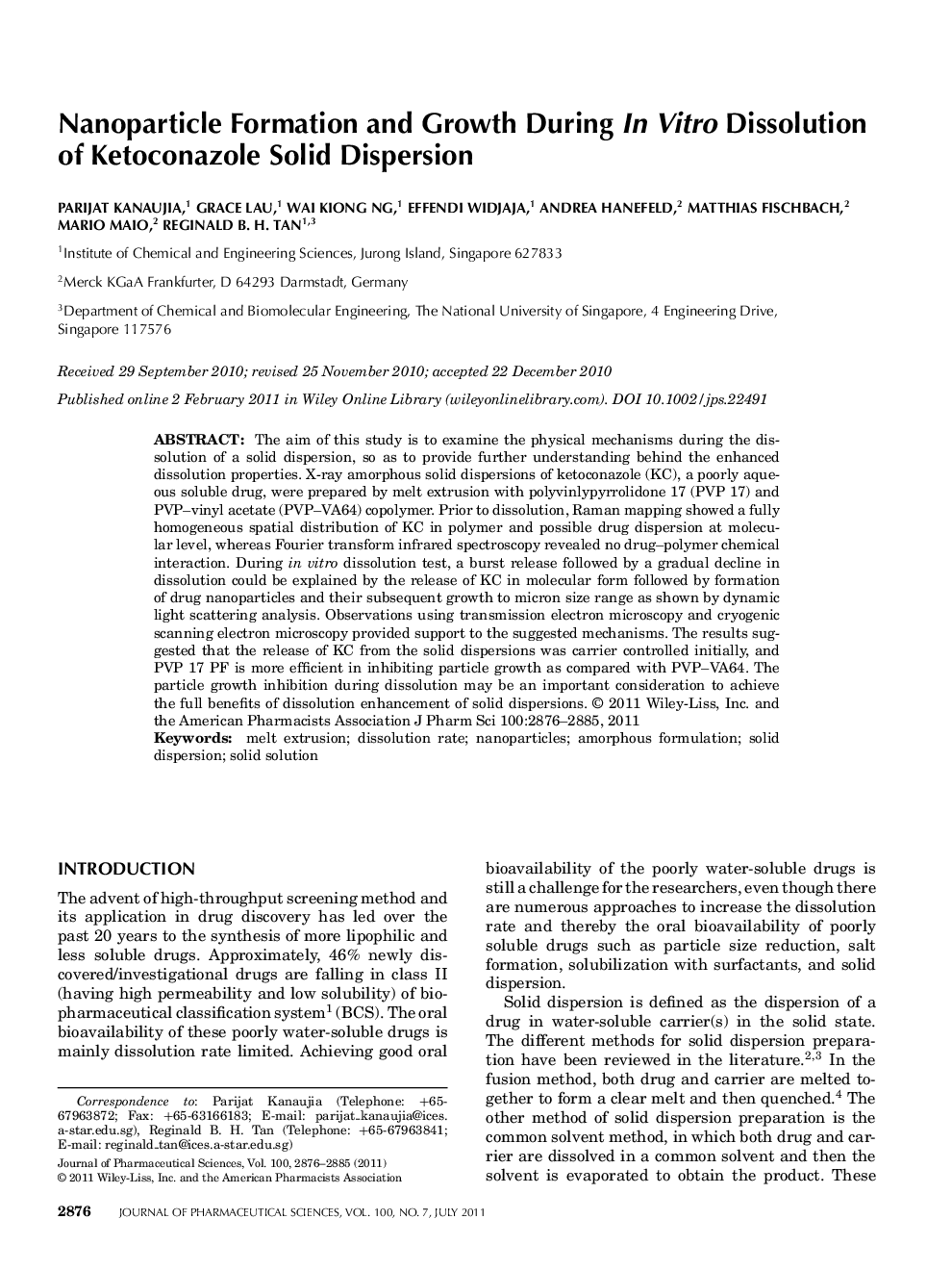| Article ID | Journal | Published Year | Pages | File Type |
|---|---|---|---|---|
| 2486637 | Journal of Pharmaceutical Sciences | 2011 | 10 Pages |
Abstract
The aim of this study is to examine the physical mechanisms during the dissolution of a solid dispersion, so as to provide further understanding behind the enhanced dissolution properties. X-ray amorphous solid dispersions of ketoconazole (KC), a poorly aqueous soluble drug, were prepared by melt extrusion with polyvinlypyrrolidone 17 (PVP 17) and PVP-vinyl acetate (PVP-VA64) copolymer. Prior to dissolution, Raman mapping showed a fully homogeneous spatial distribution of KC in polymer and possible drug dispersion at molecular level, whereas Fourier transform infrared spectroscopy revealed no drug-polymer chemical interaction. During in vitro dissolution test, a burst release followed by a gradual decline in dissolution could be explained by the release of KC in molecular form followed by formation of drug nanoparticles and their subsequent growth to micron size range as shown by dynamic light scattering analysis. Observations using transmission electron microscopy and cryogenic scanning electron microscopy provided support to the suggested mechanisms. The results suggested that the release of KC from the solid dispersions was carrier controlled initially, and PVP 17Â PF is more efficient in inhibiting particle growth as compared with PVP-VA64. The particle growth inhibition during dissolution may be an important consideration to achieve the full benefits of dissolution enhancement of solid dispersions. © 2011 Wiley-Liss, Inc. and the American Pharmacists Association J Pharm Sci 100:2876-2885, 2011
Keywords
Related Topics
Health Sciences
Pharmacology, Toxicology and Pharmaceutical Science
Drug Discovery
Authors
Parijat Kanaujia, Grace Lau, Wai Kiong Ng, Effendi Widjaja, Andrea Hanefeld, Matthias Fischbach, Mario Maio, Reginald B.H. Tan,
